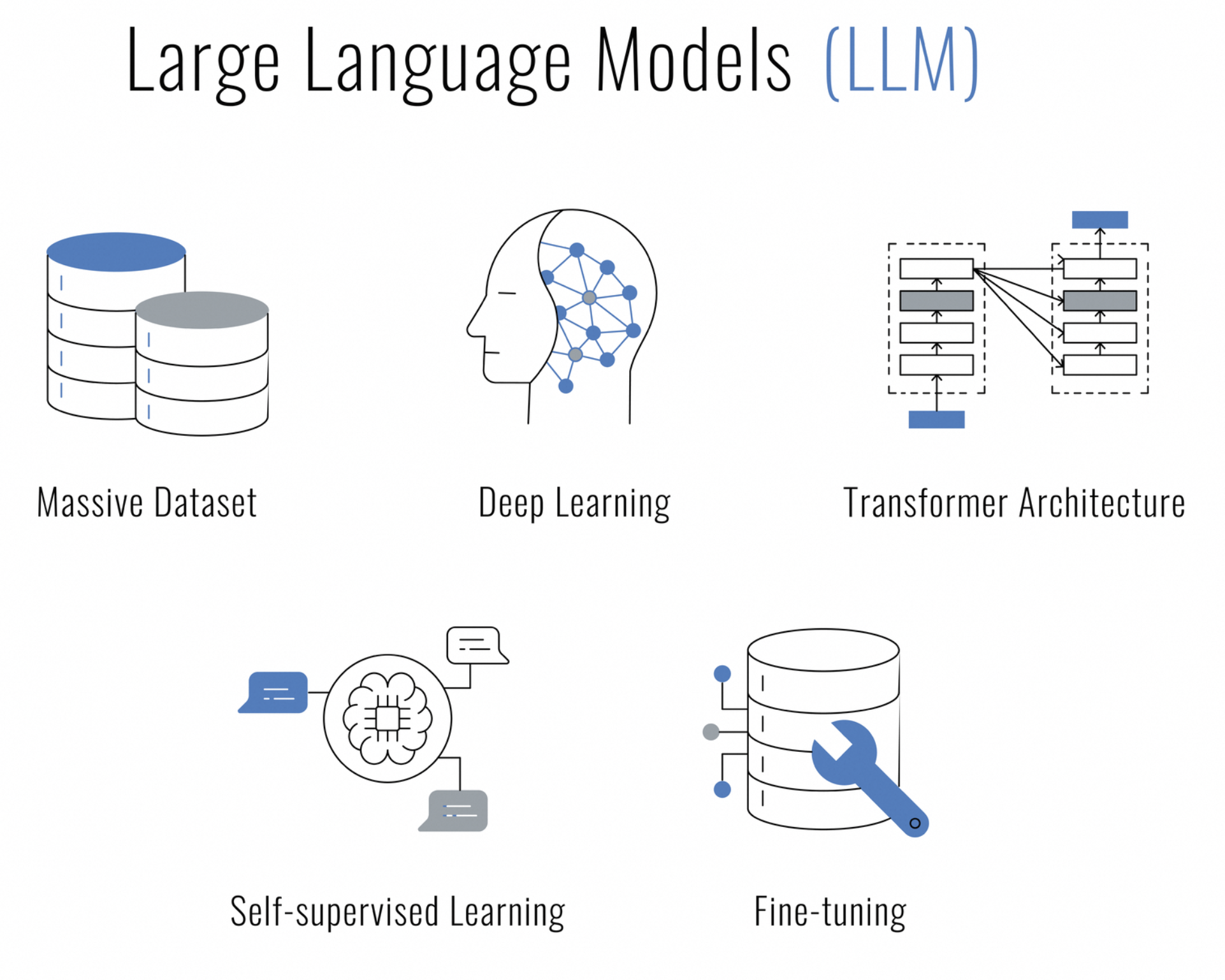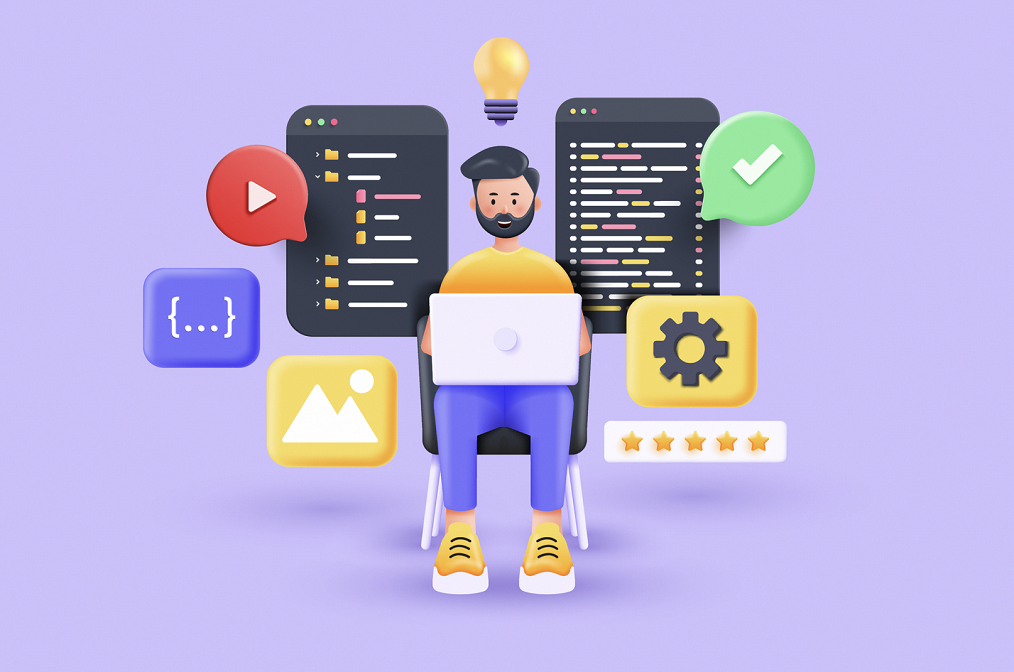Alright, you tech-savvy human, brace yourself for a thrilling adventure into the land of artificial intelligence! We're not just dipping our toes here; we're diving headfirst into the deep end with the Qwen Chat Model. What's on the agenda? Setting up a cleverer chatbot than a fox and respecting privacy like a top-notch secret agent. Intrigued? You should be! Let's start our journey by understanding Generative AI and LLM (Large Language Model).
Generative AI refers to the branch of artificial intelligence focused on creating new content, whether text, images, music, or other forms of media. This type of AI leverages machine learning models, particularly generative models, to understand patterns, features, and relationships in large datasets and generate outputs that are new and often indistinguishable from human-created content.
Generative AI continues to evolve rapidly, and its capabilities are expanding the boundaries of what machines can create, offering both exciting opportunities and challenges that need to be managed responsibly.

What are Large Language Models (LLMs)? They are a type of artificial intelligence based on deep learning techniques that are designed to understand, generate, and work with human language. They are called "large" because they consist of many millions, or even billions, of parameters, which allow them to capture a wide array of language nuances and contexts.
LLMs are trained on vast amounts of text data and use architectures such as Transformer neural networks, which have the ability to process sequences of data (like sentences) and pay attention to different parts of the sequence when making predictions. This makes them particularly effective for a range of natural language processing (NLP) tasks, such as:
Are you on the lookout for an AI that can chat, create content, summarize, code, and much more, all while respecting your right to privacy? Look no further, the Qwen Chat Model is here to transform your data center into a bastion of secure AI-powered interactions.
Qwen isn't your average chatbot. It's built on a massive language model and has been trained on a staggering 3 trillion tokens of multilingual data. This AI marvel understands both English and Chinese intricately and has been fine-tuned for human-like interaction.

Deploying Qwen locally on your server is about taking control. It's about ensuring that the conversations you have, the data processed, and the privacy promised remain under your purview. Whether you're a business looking to integrate an intelligent chat system, a developer keen on AI research, or simply an enthusiast eager to explore the bounds of conversational AI, Qwen is your go-to choice.
Now, why would you want to host this LLM locally? Three words: Control, speed, and privacy. You keep your data close to your chest, responses come at lightning speed, and you can rest easy knowing that your chatbot isn't blabbing your secrets all over the public services.
The spirit of innovation in AI is amplified by the open-source community. In keeping with this tradition, the full source code for the Qwen Chat Model is readily available on GitHub for anyone interested in diving into the mechanics of the model, contributing to its development, or simply using it as a learning resource. Whether you're a researcher, developer, or AI hobbyist, you can access the source code at Qwen.
Before we set sail on this tech odyssey, let's make sure you've got all your ducks in a row:
Got all that? Fabulous! Let's get our hands dirty (figuratively, of course).

Whether you're a die-hard fan of Visual Studio Code, a PyCharm enthusiast, or someone who enjoys the interactive flair of Jupyter Notebooks, the Python code for chatting with Qwen is flexible and IDE-agnostic. All you need is an environment that supports Python, and you're all set to bring your AI chat buddy to life.
Here's a pro tip: If you're using VSCode, take advantage of the built-in terminal to run your Python scripts seamlessly. Just open the command palette (Ctrl+Shift+P), type Python: Run Python File in Terminal, and let VSCode do the heavy lifting. You'll see Qwen's responses right in your integrated terminal.
For those of you who prefer PyCharm, running your code is just as smooth. Right-click on your script and select Run 'script_name.py', and watch as the IDE executes your conversation with Qwen. PyCharm's powerful tools and debugging features make it a great choice for developing more complex interactions.
And it doesn't end there – there's a whole plethora of IDEs and code editors that welcome Python with open arms. Pick the one that suits your workflow best, and start chatting away!
First thing's first, let's prep your Linux server. Ensure your package list is as fresh as the morning breeze and that Python and pip are ready to work their magic:
sudo apt update
sudo apt install python3 python3-pipNow for the secret ingredient: a virtual environment. It's like having a personal workspace where you can make a mess without someone yelling at you to clean up:
pip install --user virtualenv
virtualenv qwen_env
source qwen_env/bin/activateBefore we bring Qwen to life, you'll need some tools. Think of this as gathering ingredients for a Michelin-star meal:
pip install torch torchvision torchaudio
pip install transformersRemember to match PyTorch with your CUDA version – it's like pairing a fine wine with the right cheese.
Words are just words until Qwen gives them meaning. That's where the tokenizer comes in, turning your musings into something Qwen can chew on:
from transformers import AutoTokenizer
tokenizer = AutoTokenizer.from_pretrained("Qwen/Qwen-7B-Chat", trust_remote_code=True)Qwen's mind is vast and ready to be filled with your conversations. Here's how to wake up the sleeping giant:
from transformers import AutoModelForCausalLM
model = AutoModelForCausalLM.from_pretrained("Qwen/Qwen-7B-Chat", device_map="auto", trust_remote_code=True).eval()Depending on your hardware, you might opt for different precision modes like BF16 or FP16. It's like tuning your guitar for that perfect pitch.
Now comes the heart-thumping part – it's time to chat with Qwen! But before you get carried away with the back-and-forth, let's talk about something crucial: the art of conversation continuity.
Here's a sneak peek at the kind of repartee you can expect:
response, history = model.chat(tokenizer, "Greetings, Qwen! How's life in the digital realm?", history=None)
print("Qwen:", response)In our opening gambit, we're greeting Qwen with no strings attached – that is, no conversational history. By setting history=None, we're telling Qwen, "This is the start of our chat." Qwen, with nothing but the current prompt to go on, will respond with the freshness of a new interaction.
Now, watch the magic of context unfold:
response, history = model.chat(tokenizer, "Any thoughts on the meaning of life, the universe, and everything?", history=history)
print("Qwen:", response)In this round, we pass along the history we received from our previous exchange. This is like handing Qwen a diary of everything we've talked about so far. With this historical context, Qwen can craft a response that's not just witty or profound but also connected to our ongoing conversation. It's the difference between chatting with a wise friend who knows you and asking questions of a stranger.
Now that you're a pro on the importance of context with the history parameter, fire up that demo script and get ready for an engaging chat with Qwen. Whether you're discussing the cosmos or the best recipe for digital cookies, Qwen's ready to follow your conversational lead with all the grace of a seasoned conversationalist.
Also, you can fire up that script and start the conversation. It's like opening Pandora's box, but instead of chaos, you get delightful banter:
python qwen_chat.pyAnd there you have it, my friend – you've got your very own AI chat buddy, ready to conquer the world of conversation.

Congratulations! You've navigated the treacherous waters of AI deployment like a seasoned captain. Qwen is now snugly settled on your server, and your data is as safe as houses.
Explore the capabilities of Qwen, contribute to its development, and join a community of like-minded individuals passionate about advancing the state of AI conversations.
So, go forth and engage in epic dialogues with your shiny new AI sidekick. And who knows? Maybe Qwen will surprise you with its digital wisdom or a joke that'll have you ROFL.
Quickly Building a RAG Service on Compute Nest with LLM on PAI-EAS and AnalyticDB for PostgreSQL
Igniting the AI Revolution - A Journey with Qwen, RAG, and LangChain
Alibaba Cloud Community - September 6, 2024
Farruh - July 18, 2024
Alibaba Cloud Community - February 23, 2024
Farruh - February 26, 2024
Farruh - March 20, 2024
Regional Content Hub - May 6, 2024
 Tongyi Qianwen (Qwen)
Tongyi Qianwen (Qwen)
Top-performance foundation models from Alibaba Cloud
Learn More Alibaba Cloud for Generative AI
Alibaba Cloud for Generative AI
Accelerate innovation with generative AI to create new business success
Learn More AI Acceleration Solution
AI Acceleration Solution
Accelerate AI-driven business and AI model training and inference with Alibaba Cloud GPU technology
Learn More Platform For AI
Platform For AI
A platform that provides enterprise-level data modeling services based on machine learning algorithms to quickly meet your needs for data-driven operations.
Learn MoreMore Posts by Farruh